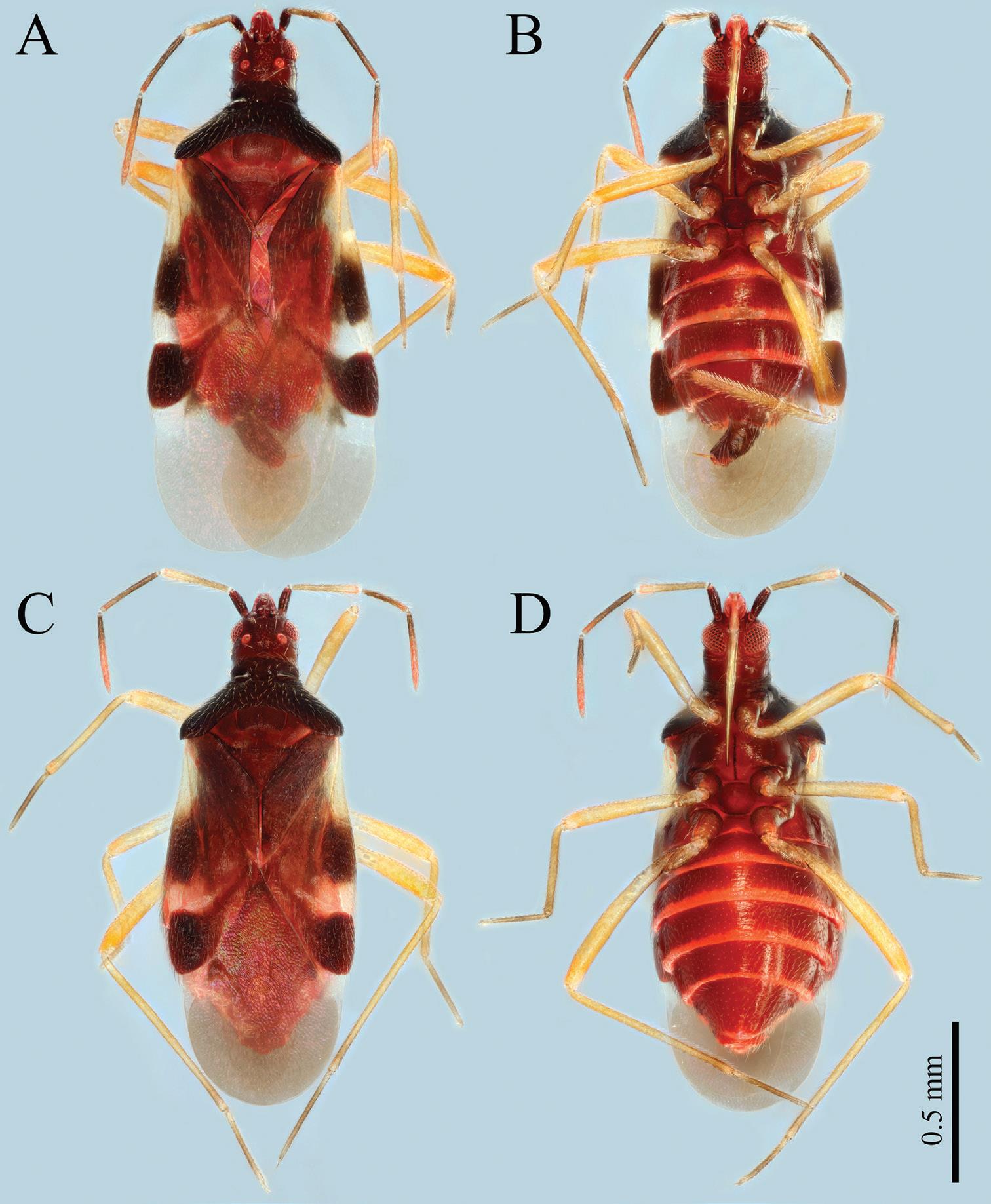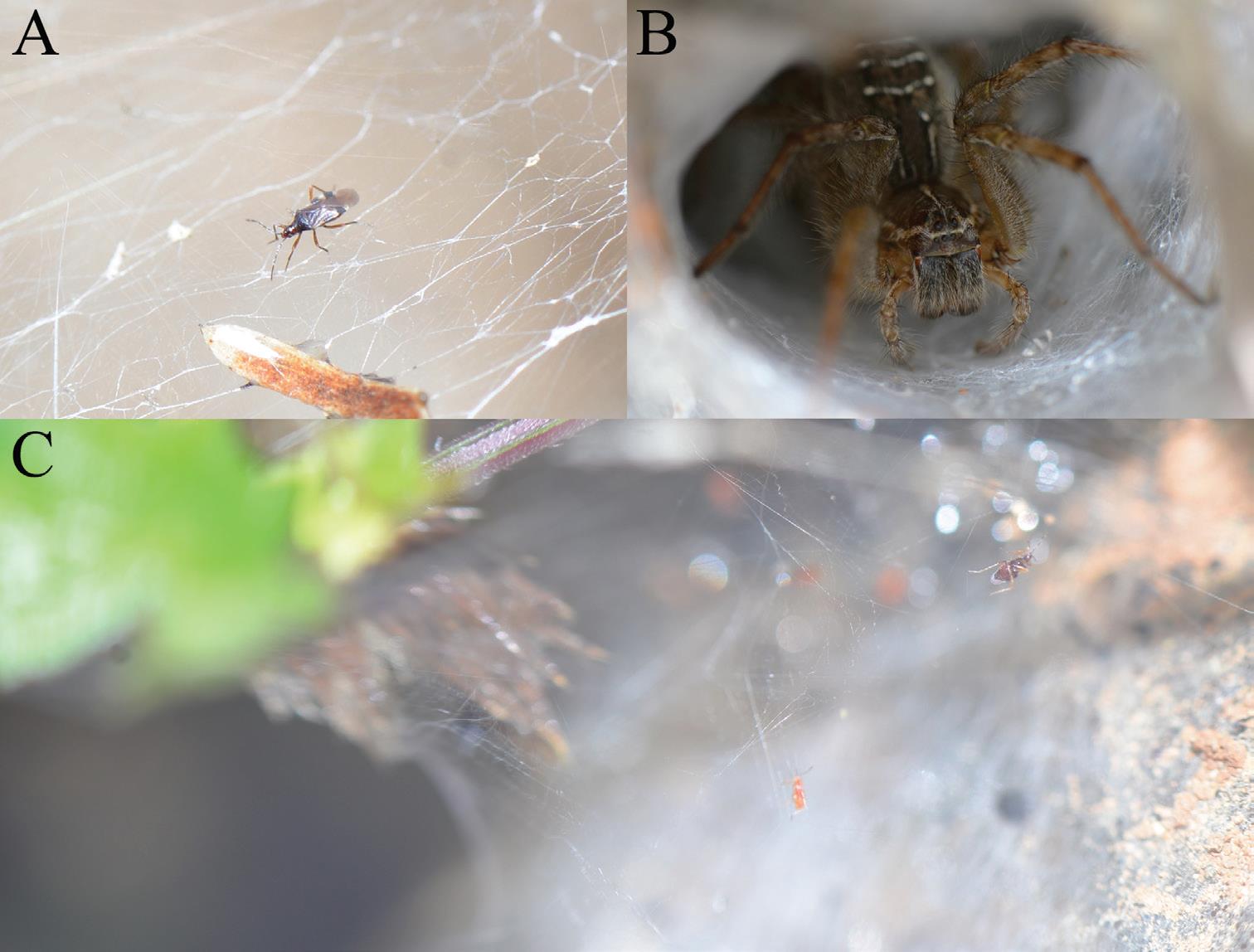A new species of the web-loving bug family Plokiophilidae has been reported from Xishuangbanna Tropical Botanical Garden (XTBG) of the Chinese Academy of Sciences (CAS). The family Plokiophilidae is a new record for the fauna of China and the first record of the genus Plokiophiloides beyond the Afrotropical Region.
The family Plokiophilidae China is a small group of true bugs, currently containing nine genera. It contains two subfamilies, Embiophilinae and Plokiophilinae: the former possessed heavy forefemoral spines and lived in the webs of Embiidina, the latter lacked forefemoral spines and lived in the webs of spiders.
During their field work, researchers from Sun Yat-sen University and XTBG collected some unknown bug specimens from the webs of wolf spiders Hippasa sp in low herbaceous plants in XTBG. After careful morphological studies and literature review, the researchers confirmed that the species is new to science and named it as Plokiophiloides bannaensis to refer its type locality of Xishuangbanna. The new species was published in ZooKeys.
Plokiophiloides bannaensis can be distinguished from the congeners by the combined characteristics: body with red pigment; exocorium with about 65 corial glands; whitish precuneal spot on forewing conspicuous; hypocostal lamina extending caudally as a short, pale whitish-yellow projection.
According to the researchers, the new species of Plokiophilidae and its host spider Hippasa sp. are currently only found in tropical China. “More investigation is needed to clarify the species diversity and thus the distribution pattern of Plokiophilidae in pantropical regions,” said Dr. PENG Yanqiong of XTBG.
Contact
PENG Yanqiong Ph.D Principal Investigator
Key Laboratory of Tropical Forest Ecology, Xishuangbanna Tropical Botanical Garden, Chinese Academy of Sciences, Mengla, Yunnan 666303, China
E-mail: pengyq@xtbg.ac.cn

Habitus of Plokiophiloides bannaensis sp. nov. A male holotype in dorsal view B male holotype
in ventral view C female paratype in dorsal view D female paratype in ventral view. (Image by LUO Jiuyang)

Habitus images of live individuals for Plokiophiloides bannaensis sp. nov. and spider host Hippasa sp.
A an adult of Plokiophiloides bannaensis sp. nov. on web
B an individual of Hippasa sp. in funnel of the web
C an adult and a nymph of Plokiophiloides bannaensis sp. nov. near funnel of the web.
(Image by LUO Jiuyang)


